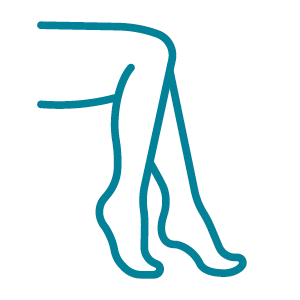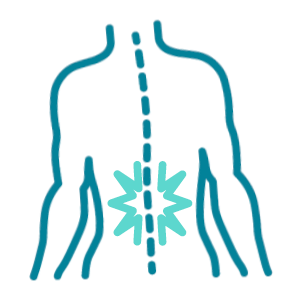Quick facts about psoriatic arthritis
It’s important to know as much as you can about your condition. That includes understanding your
symptoms and how psoriatic arthritis may affect you.
The symptoms and appearance of psoriatic arthritis vary from person to person.
Some of the most common symptoms are:
There is no definitive test that can determine whether you have the symptoms of psoriatic
arthritis. If the pain, stiffness, swelling, and skin symptoms are not caught early, they can
worsen over time and permanent joint damage can occur.
Knowing more can give you the confidence to speak with your doctor and/or
rheumatologist about getting the right diagnosis and treatment option for you.
It’s a chronic, or long-term, disease, and we don’t know the exact cause. If you have psoriatic arthritis, your immune system attacks healthy tissues like the skin and joints. That’s why it’s called an autoimmune disease.
Psoriatic arthritis includes symptoms in areas such as the joint and skin. People often mistake these symptoms as being a part of two separate conditions, but they might be connected.
Approximately 6 to 25 patients per 10,000 adults in the US.
Often appears between ages 30 and 50.
About the same number of women and men have psoriatic arthritis.
It’s more common in Caucasians than African Americans, Latino Americans, and South Asian Americans.
Approximately 15.5% of patients with plaque psoriasis also have undiagnosed psoriatic arthritis.
While there is no cure, there are treatment options that can help relieve these joint symptoms so you can do everyday activities with less difficulty.
Because psoriatic arthritis is presented differently in different people, healthcare providers should work with their patients to develop an appropriate treatment plan.
It’s a chronic, or long-term, disease, and we don’t know the exact cause. If you have psoriatic arthritis, your immune system attacks healthy tissues like the skin and joints. That’s why it’s called an autoimmune disease.
Psoriatic arthritis includes symptoms in areas such as the joint and skin. People often mistake these symptoms as being a part of two separate conditions, but they might be connected.
While there is no cure, there are treatment options that can help relieve these joint symptoms so you can do everyday activities with less difficulty.
Because psoriatic arthritis is presented differently in different people, healthcare providers should work with their patients to develop an appropriate treatment plan.
Approximately 6 to 25 patients per 10,000 adults in the US.
Often appears between ages 30 and 50.
About the same number of women and men have psoriatic arthritis.
It’s more common in Caucasians than African Americans, Hispanic Americans, and Asian Americans.
Approximately 15.5% of patients with plaque psoriasis also have undiagnosed psoriatic arthritis.
About 85% of people with psoriatic arthritis also have psoriasis on the skin.
Source: CreakyJoints
Find a nearby doctor who treats psoriatic arthritis
Have more questions about psoriatic arthritis? Use this Healthgrades™ tool to find nearby rheumatologists with experience in treating adults with active psoriatic arthritis (PsA).









